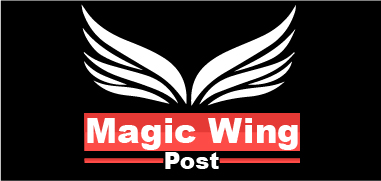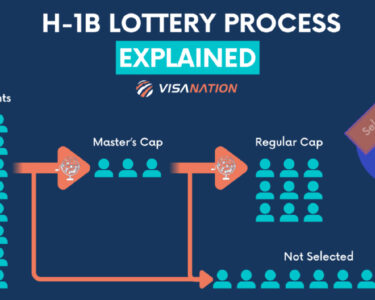Wage management is an integral component of business operations, directly bearing on payroll accuracy, employee satisfaction, and corporate compliance. Effective wage management processes can save businesses time and resources that would otherwise be spent focusing on growth and innovation. However, many still employ outdated systems that encumber operations with manual processes that lead to errors or inefficiency. In this article, we explore strategies that simplify wage management while streamlining operations for improved effectiveness and compliance.
Understanding Wage Management
Wage management, therefore, requires consideration of all the finer aspects, which are demarcated into aspects of wages, salaries, payroll, employee benefits, and wage regulation in accordance with the various labour laws, as well as accurate time tracking to produce the respective wages and subsequent timely wages’ payment. It is the management of salaries that ensures employees are paid rightfully. At the same time, the business avoids legal or fiscal issues at the same juncture. Thus, its grasp is crucial to running the company efficiently and providing the best conditions for work.
The Role of Technology in Wage Management
Wage management has undergone significant advances through the use of technology, primarily through the automation of various processes that, for a long time, were very tedious and could lead to many mistakes. It has been found that many contemporary software tools include regulations that encompass the automatic calculation of payroll and routinely updated reports on employees’ compensations and affiliations with human resources systems. These assist firms in cutting the time they spend on paperwork and enhancing precision and conformity in an effort to do away with costly mistakes.
Automating Payroll Processes
Automating payroll processes using payroll software can dramatically enhance accuracy and efficiency when managing employee payments. By automating complex calculations, tax deductions, direct deposits, risk minimization, compliance monitoring and direct deposits, businesses can save time while streamlining workflows to focus on strategic growth over administrative tasks.
Choosing the Right Wage Management System
Choosing the right wage management system is crucial for optimizing efficiency and ensuring accurate payroll processing. Key features to consider include:
- Automation: Streamlines payroll calculations and tax filings.
- Integration: seamless compatibility with HR and accounting systems.
- Scalability: adapts to business growth and changing needs.
- User-Friendly Interface: Ensures ease of use for all users.
- Security: Protects sensitive employee data with robust encryption.
Streamlining Timesheet Management
Using digital timesheets in payroll software allows employees to record their working hours more effectively. Managers can review and approve time entries faster, reducing effort and achieving accurate payroll management and effective workforce planning with fewer resources. These timesheets also minimize errors in manual entries, enhancing real-time productivity tracking accuracy. In the long run, this improved accuracy supports efficient workforce planning, saving costs, and maximizing productivity.
Ensuring Compliance with Labor Laws
The labour laws must be followed by businesses to avoid incurring many losses in fines or blocked contracts, such as minimum wage and other changes in wage and employment laws, overtime rules, and employment classifications, among others. Firms should implement systems and processes for recording working hours and payroll that are in compliance with these laws and coherently involve legal counsel, which not only aids in minimizing risks concerning compliance but also has advantages that are mutually beneficial to the corporate world and employees.
Integrating Wage Management with Other HR Systems
Wage management also works hand in hand with other human resource platforms to enhance the payroll process. Overall effectiveness is enhanced due to reduced entries involving manual data entry, while accuracy is also improved. Therefore, by integrating with the wage management software, businesses can avoid data duplication, data processing, and other data entry mistakes. Also, the relevant information and data of employees, including their benefits or performance, can be produced in real-time to assist different departments of the enterprise in making correct and quick decisions, saving the enterprise much time on administrative work.
The Importance of Data Security in Wage Management
There is an information privacy risk in wage management as delicate employees’ information that should not get into the wrong hands gets exposed unintentionally since wage management exposes workers’ ID and financial records. The solutions that comprise data encryption, strict levels of security, constant updates as a reaction to cyber threats, and compliance with the legal requirements for data protection are essential. It has to be seen that safeguarding employee trust and minimizing organizational risks financially and in terms of reputation are among its principal responsibilities.
Training and Support for Wage Management Systems
One essential component of practical training and support is having a properly functioning system of wage management. Properly planned training pieces enable the personnel to master new software that does not disrupt the company; providing practical sessions, manuals, and help and support for the latest software can help.
Several components revolve around the support of a system, giving it the capability to be effective. This service also assists users in phasing in changes easily, while help desk support and customer care assistance resolve issues swiftly. The wage management system is best supported through efficient training and effective policy enforcement, which guarantees a long-term return on investment while constantly striving to maximize the efficiency of the training.
Measuring the Success of Your Wage Management Strategy
Evaluating the effectiveness of your approach to wage management involves comparing the performance against several benchmark indicators, such as the percentage of correct payroll processing, productivity improvements in performing administrative tasks, and the employees’ satisfaction levels. Measures such as error rates, time taken in processing documents, and compliance matters aid in finding out where to improve. On the same note, cost-savings analysis gives information on its impact on an organization. When it comes to wage management strategy, the assessments help routinely keep this area strong and aligned with business needs.
Adapting Wage Management Strategies for Remote and Hybrid Workforces
Wage management is best for remote and HYBRID teams, and it should be done with exceptional etiquette while managing hours and amounts paid to workers. The incorporation of time-tracking applications drives the adoption of cloud-based tracking systems that provide a fair way of calculating hours worked irrespective of one’s location through automatic time tracking and GPS technologies that help in payroll determinations.
Security is a critical issue for remote and hybrid workers, and the communication process is essential, as the conclusions about management policies consider the hours of work, overtime, reporting, and reporting practices. Standardization is once again evident when establishing rules that the organization adheres to about work hours, overtime payment reporting policies, and the methods by which this is done; feedback analysis on regularity and other pertinent aspects aids in the development of a fair wage management system that supports the organization’s operations.
Conclusion
Streamlining wage management is essential to improving accuracy, efficiency, and overall business performance. Leveraging modern technologies, automating processes, and ensuring compliance can save businesses valuable time while decreasing errors. Establishing effective systems and practices enhances operational efficiencies and contributes to employee happiness and organizational expansion. These efforts guarantee long-term success with flexibility for adaptability to an ever-evolving business environment.






